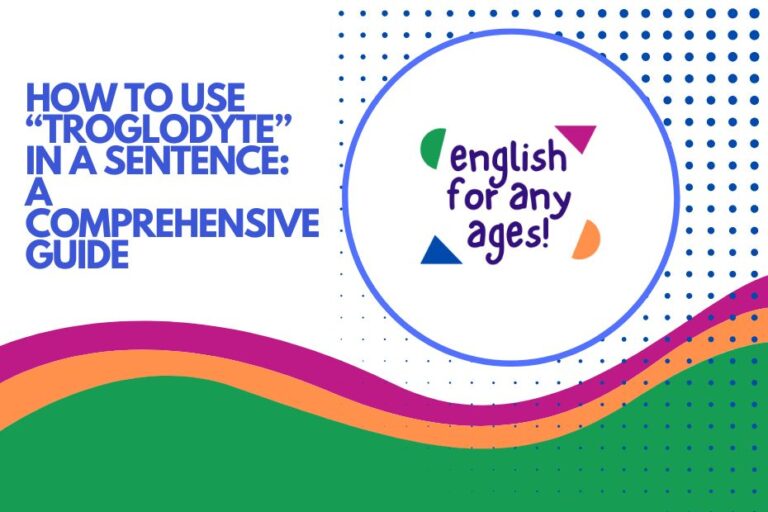How to Use “Lead Actress” in a Sentence: A Grammar Guide
Understanding how to correctly use the term “lead actress” is crucial for clear and accurate communication, particularly in discussions about film, theater, and television. This guide provides a comprehensive overview of the term, including its definition, structural elements, usage rules, common mistakes, and practical exercises.
Whether you’re a student, writer, or simply a film enthusiast, mastering the proper usage of “lead actress” will enhance your ability to express yourself effectively and avoid grammatical errors. This article will benefit anyone looking to improve their understanding of English grammar and enrich their vocabulary related to the performing arts.
Table of Contents
- Introduction
- Definition of “Lead Actress”
- Structural Breakdown
- Types and Categories
- Examples of “Lead Actress” in Sentences
- Usage Rules
- Common Mistakes
- Practice Exercises
- Advanced Topics
- Frequently Asked Questions
- Conclusion
Definition of “Lead Actress”
The term “lead actress” refers to the female performer who plays the primary or most prominent role in a film, play, television show, or other dramatic production. She is central to the narrative and often drives the plot forward.
The lead actress is typically the character whose story is most closely followed and developed throughout the performance. Understanding this definition is crucial for accurately identifying and discussing the principal female role in any theatrical work.
In the context of awards and nominations, “lead actress” specifically designates the category for female performers who have played a substantial and leading role. This distinguishes them from “supporting actresses,” who play significant but secondary roles.
The distinction can sometimes be subjective, based on screen time, narrative importance, and critical interpretation.
Classification
“Lead actress” is a noun phrase, specifically a compound noun, combining the adjective “lead” with the noun “actress.” It functions as a subject, object, or complement in a sentence. The term clearly identifies a specific type of performer based on the significance of their role in a production.
Function
The primary function of “lead actress” is to identify the performer who embodies the most important female character in a dramatic work. It serves to distinguish her from other actresses in the production who may play supporting roles.
This distinction is essential for critical analysis, award nominations, and general discussions about film and theater.
Contexts
“Lead actress” is used in various contexts, including:
- Film reviews and critiques
- Theater programs and playbills
- Award ceremonies and nominations (e.g., the Academy Awards, the Tony Awards)
- Academic discussions of film and theater
- Everyday conversations about movies and plays
- Casting calls and production announcements
Knowing these contexts helps one understand the specific implications and nuances of the term in different situations.
Structural Breakdown
The term “lead actress” is structurally straightforward, but understanding its components is essential for proper usage. “Lead” functions as an adjective modifying “actress.” It signifies the importance or primary nature of the role played by the actress.
“Lead” as an Adjective
In the phrase “lead actress,” the word “lead” acts as an adjective. It describes the type of role the actress is portraying.
Other examples of “lead” used as an adjective include “lead singer,” “lead guitarist,” and “lead investigator.” In each case, “lead” indicates the primary or most important function within a group or activity.
“Actress” as a Noun
“Actress” is a noun that refers to a female performer who acts in a play, movie, or television show. It’s the core noun that “lead” modifies to specify the type of actress being discussed.
The noun “actress” provides the fundamental identity, while “lead” adds the crucial qualifier about her role’s significance.
Noun Phrase Construction
“Lead actress” forms a noun phrase, which functions as a single unit within a sentence. This phrase can act as the subject, object, or complement, depending on the sentence structure.
Understanding this grammatical function helps in constructing grammatically correct and meaningful sentences using the term.
Types and Categories
While the core meaning of “lead actress” remains consistent, there are nuances and related terms that are important to understand. These distinctions often arise in the context of awards, critical analysis, and industry terminology.
Lead vs. Supporting Actress
The most significant distinction is between “lead actress” and “supporting actress.” The lead actress plays the central role, while the supporting actress plays a secondary but still significant role. The line between these categories can sometimes be blurry, leading to debates during award season.
Factors such as screen time, narrative importance, and the overall impact of the character are considered when determining the appropriate category.
“Female Lead”
The term “female lead” is often used interchangeably with “lead actress,” though “female lead” can also refer to the character being played rather than the actress herself. For example, one might say, “The female lead in the movie is a strong and independent woman.” It’s essential to consider the context to understand whether “female lead” refers to the character or the actress portraying her.
Other Related Terms
Other related terms include “protagonist,” which refers to the main character in a story, and “star,” which refers to a famous or prominent actor or actress. While a lead actress is often the protagonist and a star, these terms are not always interchangeable.
A lead actress may not be a major star, and the protagonist may not always be female.
Examples of “Lead Actress” in Sentences
The following tables provide numerous examples of how to use “lead actress” in various sentence structures and contexts. These examples demonstrate the term’s flexibility and illustrate its proper usage in different situations.
Table 1: “Lead Actress” as the Subject of a Sentence
This table illustrates how “lead actress” functions as the subject of a sentence, performing the action described by the verb.
| Sentence |
|---|
| The lead actress delivered a moving performance. |
| The lead actress accepted the award with grace. |
| The lead actress is known for her versatility. |
| The lead actress prepared extensively for her role. |
| The lead actress captivated the audience with her presence. |
| The lead actress has starred in several successful films. |
| The lead actress rehearsed her lines meticulously. |
| The lead actress inspired many with her dedication. |
| The lead actress received critical acclaim for her portrayal. |
| The lead actress signed autographs after the premiere. |
| The lead actress collaborated closely with the director. |
| The lead actress overcame several challenges during filming. |
| The lead actress expressed gratitude to her colleagues. |
| The lead actress dedicated her performance to her family. |
| The lead actress promoted the film extensively. |
| The lead actress attended numerous film festivals. |
| The lead actress addressed the rumors during the interview. |
| The lead actress showcased her talent in a variety of scenes. |
| The lead actress brought depth and complexity to her character. |
| The lead actress connected deeply with the story’s themes. |
| The lead actress used method acting techniques. |
| The lead actress studied the historical context of her role. |
| The lead actress is a graduate of Juilliard School. |
| The lead actress is married to a famous director. |
| The lead actress volunteers at a local theater. |
Table 2: “Lead Actress” as the Object of a Sentence
This table demonstrates how “lead actress” functions as the object of a sentence, receiving the action of the verb.
| Sentence |
|---|
| The director praised the lead actress for her commitment. |
| The critics lauded the lead actress‘s performance. |
| Everyone admired the lead actress‘s dedication. |
| They interviewed the lead actress about her role. |
| The studio promoted the lead actress heavily. |
| The audience applauded the lead actress enthusiastically. |
| The producer selected the lead actress after a long audition process. |
| The playwright congratulated the lead actress on her success. |
| The newspapers featured the lead actress on their front pages. |
| The fans mobbed the lead actress after the show. |
| The cinematographer filmed the lead actress with great care. |
| The publicist managed the lead actress‘s image meticulously. |
| The costume designer dressed the lead actress in elegant gowns. |
| The makeup artist transformed the lead actress for her role. |
| The choreographer guided the lead actress through complex dance sequences. |
| The dialect coach helped the lead actress perfect her accent. |
| The stunt coordinator trained the lead actress for action scenes. |
| The editor highlighted the lead actress‘s best moments. |
| The composer wrote a special theme for the lead actress. |
| The lighting designer focused on the lead actress during key scenes. |
| The writer created a compelling backstory for the lead actress‘s character. |
| The casting director discovered the lead actress at a local theater. |
| The stage manager coordinated the scenes involving the lead actress. |
| The security team protected the lead actress from the paparazzi. |
| The agent negotiated the lead actress‘s contract. |
Table 3: “Lead Actress” as a Complement
This table illustrates how “lead actress” functions as a complement, providing more information about the subject of the sentence.
| Sentence |
|---|
| She is the lead actress in the new play. |
| Meryl Streep is a renowned lead actress. |
| The star of the show was the lead actress. |
| Her dream was to become a lead actress. |
| Many consider her the best lead actress of her generation. |
| The role of Juliet is a coveted one for any lead actress. |
| Winning the award solidified her status as a lead actress. |
| She has always been known as a versatile lead actress. |
| Becoming a successful lead actress requires hard work and dedication. |
| The highlight of the evening was the performance by the lead actress. |
| Her portrayal of the queen established her as a prominent lead actress. |
| The director saw her potential to be an exceptional lead actress. |
| Her dedication to her craft made her a remarkable lead actress. |
| The audience recognized her as a talented lead actress. |
| She trained for years to become a skilled lead actress. |
| The critics hailed her as a rising lead actress. |
| Her commitment to her role defined her as a powerful lead actress. |
| She is widely regarded as a gifted lead actress. |
| The production team considered her the ideal lead actress for the part. |
| Her natural talent made her a captivating lead actress. |
| The film industry celebrated her as an accomplished lead actress. |
| Her passion for acting distinguished her as a dedicated lead actress. |
| The theater community admired her as a respected lead actress. |
| She proved herself to be a competent lead actress in every role. |
| Her versatility made her a sought-after lead actress. |
Table 4: “Lead Actress” in Possessive Form
This table illustrates how to use the possessive form of “lead actress” to show ownership or association.
| Sentence |
|---|
| The lead actress’s performance was unforgettable. |
| The lead actress’s acceptance speech was heartfelt. |
| The lead actress’s dedication to the role was evident. |
| The lead actress’s talent shone brightly on stage. |
| The lead actress’s commitment impressed the director. |
| The lead actress’s charisma captivated the audience. |
| The lead actress’s preparation was meticulous. |
| The lead actress’s hard work paid off. |
| The lead actress’s influence on the film was significant. |
| The lead actress’s portrayal was authentic. |
| The lead actress’s interpretation of the character was unique. |
| The lead actress’s connection with the audience was palpable. |
| The lead actress’s understanding of the script was profound. |
| The lead actress’s ability to embody the character was remarkable. |
| The lead actress’s emotional range was impressive. |
| The lead actress’s stage presence was commanding. |
| The lead actress’s skill in improvisation was evident. |
| The lead actress’s rapport with her co-stars was strong. |
| The lead actress’s attention to detail was commendable. |
| The lead actress’s contribution to the film was invaluable. |
| The lead actress’s portrayal of vulnerability was particularly moving. |
| The lead actress’s ability to connect with the character’s emotions was striking. |
| The lead actress’s success is a testament to her hard work. |
| The lead actress’s dedication to her craft is inspiring. |
| The lead actress’s ability to transform is incredible. |
Table 5: “Lead Actress” with Modifiers
This table illustrates how to use adjectives and adverbs to modify “lead actress” and provide more specific details.
| Sentence |
|---|
| The critically acclaimed lead actress won an Oscar. |
| The talented young lead actress is making waves in Hollywood. |
| The seasoned lead actress brought depth to the role. |
| The charismatic lead actress captivated the audience. |
| The versatile lead actress excelled in both comedy and drama. |
| The stunning lead actress graced the red carpet. |
| The dedicated lead actress spent months preparing for the role. |
| The internationally renowned lead actress starred in the film. |
| The rising star lead actress is one to watch. |
| The beloved lead actress has a large fan base. |
| The exceptionally gifted lead actress received glowing reviews. |
| The highly respected lead actress is admired by her peers. |
| The remarkably talented lead actress delivered a tour-de-force performance. |
| The incredibly dedicated lead actress immersed herself in the character. |
| The strikingly beautiful lead actress commanded attention on screen. |
| The widely acclaimed lead actress is known for her range. |
| The immensely popular lead actress has a strong social media presence. |
| The consistently impressive lead actress never fails to deliver. |
| The surprisingly funny lead actress showcased her comedic skills. |
| The deeply emotional lead actress moved audiences to tears. |
| The fiercely independent lead actress chose roles that challenged her. |
| The creatively brilliant lead actress brought her own vision to the part. |
| The quietly confident lead actress exuded grace and poise. |
| The powerfully expressive lead actress conveyed complex emotions. |
| The refreshingly authentic lead actress resonated with viewers. |
Usage Rules
Using “lead actress” correctly involves understanding the grammatical rules that govern its placement and function within a sentence. These rules ensure clarity and prevent common errors.
Article Usage (a, an, the)
When referring to a specific lead actress, use the definite article “the.” When referring to a lead actress in a general sense, use the indefinite article “a” or “an,” depending on the sound of the following word.
- The lead actress gave a stunning performance. (Specific actress)
- She hopes to become a lead actress one day. (General aspiration)
- An aspiring lead actress must be dedicated. (General aspiration)
Pluralization
The plural form of “lead actress” is “lead actresses.” This form is used when referring to multiple lead actresses.
- The film featured several talented lead actresses.
- The awards ceremony honored the year’s best lead actresses.
Possessive Form Rules
To show possession, use the possessive form “lead actress’s.” For plural possessive, use “lead actresses’.”
- The lead actress’s performance was outstanding.
- The lead actresses’ contributions were essential to the play’s success.
Formal vs. Informal Usage
“Lead actress” is appropriate for both formal and informal contexts. It’s a standard term used in professional and casual settings.
Common Mistakes
Several common mistakes can occur when using the term “lead actress.” Being aware of these errors can help you avoid them and improve your writing and speaking skills.
Incorrect Pluralization
A common mistake is using “lead actress’s” as the plural form. The correct plural form is “lead actresses.”
- Incorrect: The film featured several lead actress’s.
- Correct: The film featured several lead actresses.
Misusing Articles
Another common error is using the wrong article (“a,” “an,” “the”) or omitting it altogether.
- Incorrect: She is lead actress in the play.
- Correct: She is the lead actress in the play.
- Incorrect: He wants to be the lead actress.
- Correct: He wants to be a lead actress.
Confusing with “Supporting Actress”
It’s important to distinguish between “lead actress” and “supporting actress.” Using the wrong term can misrepresent the role played by the actress.
- Incorrect: She won the award for supporting actress, but she was the lead in the film.
- Correct: She won the award for lead actress, as she was the main character in the film.
Incorrect Possessive Form
Using the wrong possessive form is another common mistake.
- Incorrect: The lead actresss’ performance was amazing.
- Correct: The lead actress’s performance was amazing.
Practice Exercises
These exercises will help you practice using “lead actress” correctly in various contexts. Each exercise focuses on a specific aspect of the term’s usage.
Exercise 1: Fill in the Blanks
Fill in the blanks with the correct form of “lead actress” (lead actress, lead actresses, lead actress’s, lead actresses’).
| Question | Answer |
|---|---|
| 1. ______ performance was highly praised by the critics. | lead actress’s |
| 2. The film featured several talented ______. | lead actresses |
| 3. She hopes to become a ______ in Hollywood. | lead actress |
| 4. The ______ contributions were essential to the play’s success. | lead actresses’ |
| 5. The director admired the ______ dedication. | lead actress’s |
| 6. The drama school provides training for future ______. | lead actresses |
| 7. She is known as the ______ in the upcoming movie. | lead actress |
| 8. The ______ hard work paid off with an award. | lead actress’s |
| 9. Many aspiring ______ dream of winning an Oscar. | lead actresses |
| 10. The show’s success depended on the ______ talent. | lead actress’s |
Exercise 2: Correct the Sentences
Identify and correct the errors in the following sentences.
| Question | Answer |
|---|---|
| 1. The film featured one lead actress’s. | The film featured one lead actress. |
| 2. She is a lead actress in the play now. | She is the lead actress in the play now. |
| 3. The lead actresss’ role was challenging. | The lead actress’s role was challenging. |
| 4. Several lead actress was nominated for the award. | Several lead actresses were nominated for the award. |
| 5. The play highlighted the lead actress talent. | The play highlighted the lead actress’s talent. |
| 6. She wants to be the lead actress one day. | She wants to be a lead actress one day. |
| 7. He admired lead actresses dedication to her craft. | He admired the lead actress’s dedication to her craft. |
| 8. The lead actresses performance was unforgettable. | The lead actress’s performance was unforgettable. |
| 9. Many aspiring lead actress dreams of winning an Oscar. | Many aspiring lead actresses dream of winning an Oscar. |
| 10. The shows success depended on the lead actress talent. | The show’s success depended on the lead actress’s talent. |
Exercise 3: Sentence Construction
Create sentences using “lead actress” in the following contexts:
| Context | Example Sentence |
|---|---|
| Describing a recent award winner | The lead actress, known for her dramatic roles, won the Best Actress award. |
| Discussing a film’s casting choices | The director chose the lead actress for her ability to portray complex emotions. |
| Analyzing a performance | The lead actress’s portrayal of the character was both nuanced and powerful. |
| Talking about career aspirations | She is working hard to establish herself as a lead actress in the industry. |
| Comparing different actresses | Many critics consider her to be a more versatile lead actress than her contemporaries. |
| Praising the actress’s skill | The lead actress delivered a moving and unforgettable performance. |
| Talking about future productions | The lead actress is currently filming a new movie. |
| Stating an opinion | I think she is the best lead actress of her generation. |
| Describing the actress’s preparation | The lead actress spent months researching her role. |
| Describing the effect of the performance | The lead actress’s performance brought the audience to tears. |
Advanced Topics
For advanced learners, exploring the nuances and complexities surrounding the term “lead actress” can provide a deeper understanding of its usage and implications. These topics delve into subjective interpretations and evolving industry standards.
Subjectivity of Lead Roles
Determining who qualifies as a “lead actress” can be subjective. Screen time, narrative importance, and critical reception all play a role.
Sometimes, an actress may have less screen time but still be considered the lead due to the impact of her character on the story.
Gender-Neutral Language
In discussions about gender neutrality and inclusivity, some people prefer the term “lead actor” regardless of gender. While “lead actress” remains the standard term for female performers, it’s important to be aware of evolving language preferences and use inclusive language when appropriate.
Historical Context
The role and recognition of lead actresses have evolved over time. Studying the history of women in film and theater provides valuable context for understanding the significance of the term “lead actress” and its cultural implications.
Frequently Asked Questions
Here are some frequently asked questions about using “lead actress” in a sentence.
- What is the difference between “lead actress” and “supporting actress”?
- Can “lead actress” be used to describe a character in a book?
- Is it correct to say “female lead” instead of “lead actress”?
- How do I use the possessive form of “lead actress” correctly?
- When should I use “the” before “lead actress”?
- What is the plural form of “lead actress”?
- Can “lead actor” be used for a female performer?
- How has the role of a lead actress evolved in modern cinema?
The lead actress plays the primary role in a film, play, or television show, driving the narrative and receiving the most focus. A supporting actress plays a secondary but still significant role, often assisting or interacting with the lead character. The distinction is based on the prominence and impact of the role within the story.
While primarily used in the context of film, theater, and television, “lead actress” can metaphorically describe a character in a book who embodies the qualities and narrative importance typically associated with a lead actress. However, it’s more common to use terms like “protagonist” or “main character” when discussing books.
Yes, “female lead” is often used interchangeably with “lead actress.” However, “female lead” can also refer to the character being played rather than the actress herself. The context will usually clarify the intended meaning.
To show possession, use “lead actress’s.” For example, “The lead actress’s performance was outstanding.” If you are referring to multiple lead actresses, use “lead actresses’.” For example, “The lead actresses’ contributions were essential.”
Use “the” when referring to a specific lead actress in a particular context. For example, “The lead actress in the new movie is very talented.” If you are speaking generally, use “a” or “an.” For example, “She hopes to become a lead actress one day.”
The plural form of “lead actress” is “lead actresses.” Use this form when referring to multiple lead actresses.
While “lead actress” is the standard term for a female performer in a leading role, some people may prefer “lead actor” as a gender-neutral term. Using “lead actress” is generally preferred to avoid confusion and maintain clarity.
The role of a lead actress has evolved significantly, with modern cinema often showcasing female characters in more complex, empowered, and diverse roles. Lead actresses are now frequently portrayed as strong, independent, and multifaceted individuals, challenging traditional stereotypes and reflecting a broader range of experiences and perspectives.
Conclusion
Understanding how to use “lead actress” correctly is essential for anyone involved in discussing or analyzing film, theater, and television. This comprehensive guide has covered the definition, structural breakdown, usage rules, common mistakes, and advanced topics related to the term.
By mastering these concepts and practicing the exercises provided, you can confidently use “lead actress” in your writing and speaking, ensuring clarity and accuracy in your communication.
Remember the key takeaways: “lead actress” identifies the primary female performer, its correct plural form is “lead actresses,” and the possessive is “lead actress’s.” Be mindful of the distinction between “lead actress” and “supporting actress,” and always use the appropriate article (“a,” “an,” “the”). With consistent practice and attention to detail, you can avoid common mistakes and elevate your understanding of English grammar related to the performing arts.






